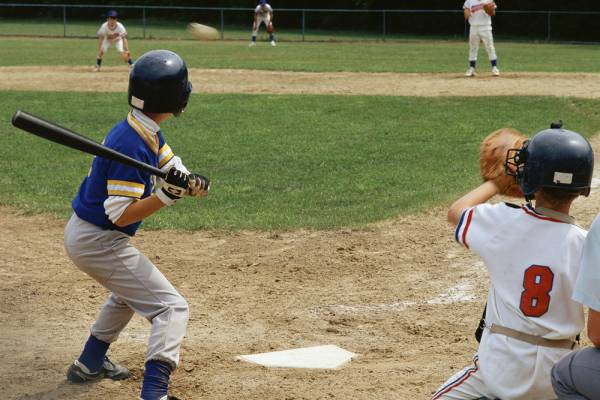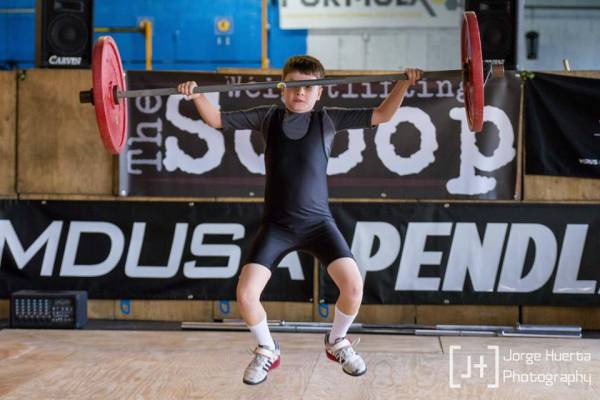Young athletes are sustaining injuries they never should because we are not properly preparing them for the sport they are playing at the intensity they are asked to.
The answer to the problem? We need to be advocating and encouraging our young athletes to strength train. Here are seven reasons why this is so imperative.
Young athletes are sustaining injuries they never should because we are not properly preparing them for the sport they are playing at the intensity they are asked to.
The answer to the problem? We need to be advocating and encouraging our young athletes to strength train. Here are seven reasons why this is so imperative.
1. Physically Prepare for Training
Youth athletes are not simply mini adults. They are still growing and often lack coordination. They sit all day, and because of this may have inappropriate hip functionality, as well as a lack of posterior strength. In other words, they have musculoskeletal imbalances that need to be addressed before they lead to pain or injury down the road.
“[Y]outh need to work regularly with a prehabilitation and movement specialist (e.g. physiotherapist) and strength and conditioning coaches to ensure these potential injuries never become an issue.“
Youth athletes do not have the strength, endurance, or stability of their muscles and joints to properly or efficiently perform many sports skills. This means they are at high risk for poor form, improper technique, and training errors. In addition, because they are often doing sport-specific training for the first time and trying to meet coach and parent expectations, they may not know how to properly recognize injuries. Instead, they put a “twinge” or “pain” off as just being sore from their training.
Put simply, youth athletes aren’t physically prepared to jump into high frequency sport training right away. They need to prepare their body for their sport by working with specialists in strength and conditioning and prehabilitation to ensure they have the proper strength, endurance, balance, coordination, and mobility.
2. Prevent Overuse Injuries
This point is related to the above – youth have inherent musculoskeletal imbalances and lack strength and endurance (especially in the posterior muscular chain and stabilizing muscles). Because of this, if these athletes don’t physically prepare to train for a specific sport, it isn’t a question of if your athlete is going to get an injury, but when.
Our bodies are amazing and find a way to accomplish pretty much any task we ask of them. If one muscle is weak, another will take over. If one joint lacks mobility, you’ll usually see another nearby joint have too much. But this is precisely the problem.

These compensations become the norm for our bodies. The strong muscles get stronger and the weak muscles get weaker. We continue to compensate daily, only further exacerbating the issue. This leads to altered and improper movement, dysfunction, and pain. Left unchecked, it can result in overuse injuries that can halt our youths’ training and sport participation, not to mention their regular day-to-day life.
This is why youth need to work regularly with a prehabilitation and movement specialist (e.g. physiotherapist) and strength and conditioning coaches to ensure these potential injuries never become an issue. Regular check-ins are a must, especially when transitioning to a new or higher-level sport, at the beginning and end of the season, and after a growth spurt or puberty, as well as after any injury, surgery, or extended illness.
3. Decrease the Likelihood of Traumatic Injuries
Unlike overuse injuries, traumatic injuries cannot be predicted. These injuries don’t happen gradually, but in mere seconds – the torn ACL, fractured ankle, or dislocated shoulder.
But just because these injuries cannot be predicted, doesn’t mean they can’t be prevented. This comes back to ensuring athletes have the proper strength and stability of their muscles and joints. If the shoulder muscles are strong – the stabilizing muscles are on, firing, and working properly – there is less of a chance of the athlete dislocating her shoulder compared to if she had little strength there. If the athlete has excellent balance and strength in his foot and ankle muscles, there is less chance he will experience a sprain.
“This current model is not working. Instead, youth athletes need to consistently work with a team.“
Yes, we can’t avoid all traumatic injuries, but we can certainly work to make that our youth are strong and able to withstand the stress they will encounter while playing their sport.
4. Improve Athletic Performance
Working with professionals is imperative for not only injury prevention, but also to improve sports performance. Resistance and mobility training will have the biggest impact on the nervous system. You won’t see your young athletes putting on substantial size, but they will have the capability to get stronger due to a more functional nervous system.
Furthermore, by working with professionals, youth will work toward optimizing their mobility, stability, coordination, strength, and movement efficiency. Their speed, agility, quickness and conditioning will also improve. In addition, as athletes get older and their physiology evolves, a movement specialist and strength coach can work with them to teach skills that require a greater magnitude of mental focus and physical output.
Professionals know when and which techniques and exercises can be implemented and adapted to ensure the most effective movement and the greatest improvement in performance.

5. Improve Self-Confidence and Self-Esteem
Training properly will not only improve performance and reduce injuries, but will also enhance self-confidence, self-esteem, and body image. With a well-designed strength and mobility program, we teach youth athletes how to train properly and give them the confidence to do so. We show them what they can accomplish. They see what their body can do that it couldn’t do before. All that in addition to improved body composition from their training. The resulting confidence and self-esteem helps them not only in their sport, but in all avenues of life.
6. It’s Fun!
Mixing up training and adding in resistance exercises is and should always be fun. This way youth don’t feel like they are always practicing and playing their sport, but they know they are still working toward improving their skills. Keeping it fun and mixing things up also helps prevent physical and mental burnout, especially as youth athletes begin to specialize in their specific sports.
7. The Traditional Model Is Failing
The current model in youth sports looks one of two ways:
- Youth are training for their sport with their coaches, but don’t work with a strength and conditioning or mobility specialist. They either don’t follow a resistance program or follow a program made as well as could be made by a parent or coach.
- Youth do work with a specialist, but they see this person rarely, the time per session is finite, and though importance is placed on form, when these athletes are training with their peers in the high school weight room, guess who is loading up the bar?
This current model is not working. Instead, youth athletes need to consistently work with a team. Yes, a team – coaches, strength and conditioning specialists, and mobility/prehabilitation specialists who all work together and communicate with each other. This team can provide consistent advice, information, and support to the athletes so they can excel both physically and mentally.
Check out these related articles:
- Understanding the Off-season for Youth Athletes
- The Real and Present Danger In Overtraining Youth Athletes
- 7 Ways to Build Real Self-Esteem In Youth Athletes
Photos 1 and 2 courtesy of Shutterstock.
Photo 3 courtesy of Jorge Huerta Photography.






